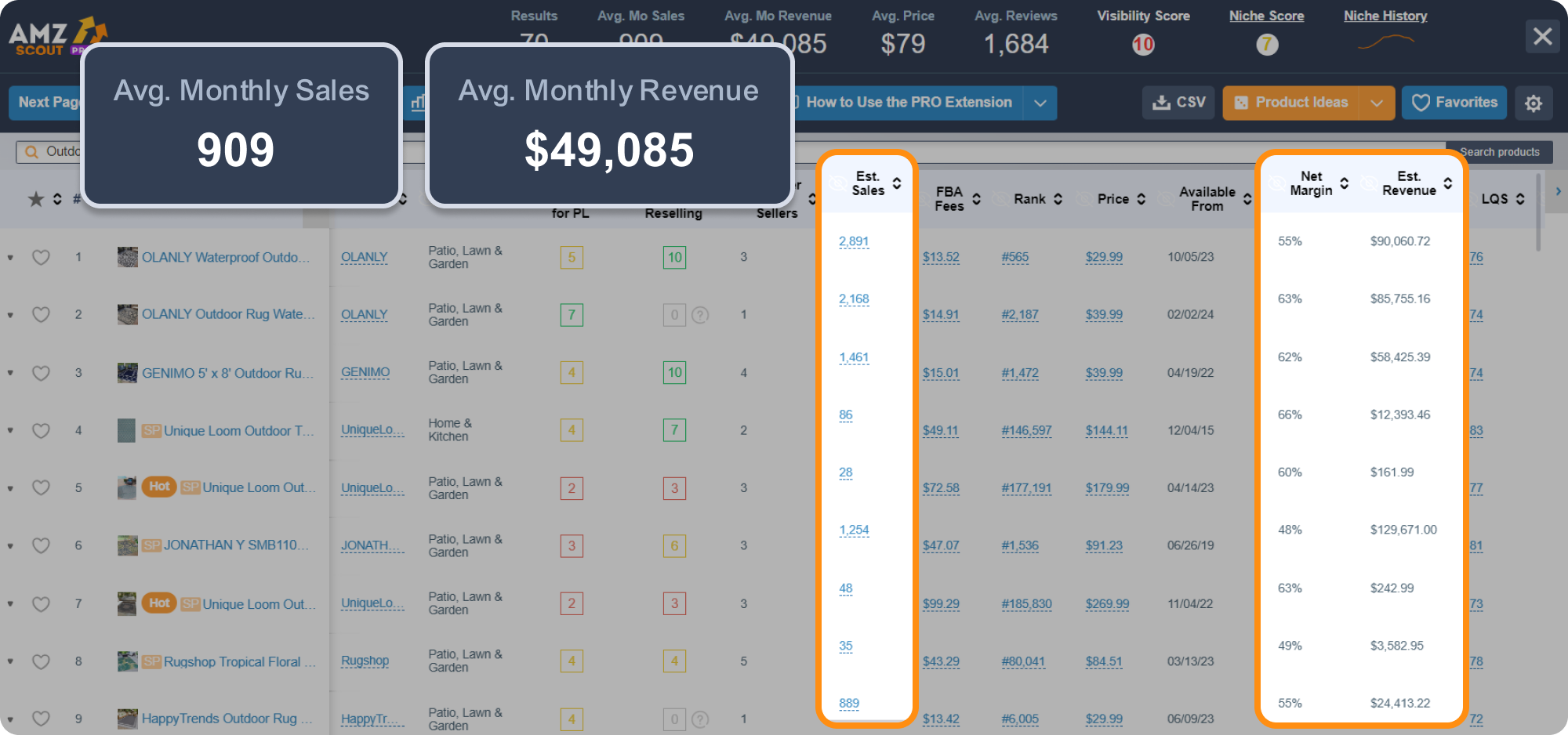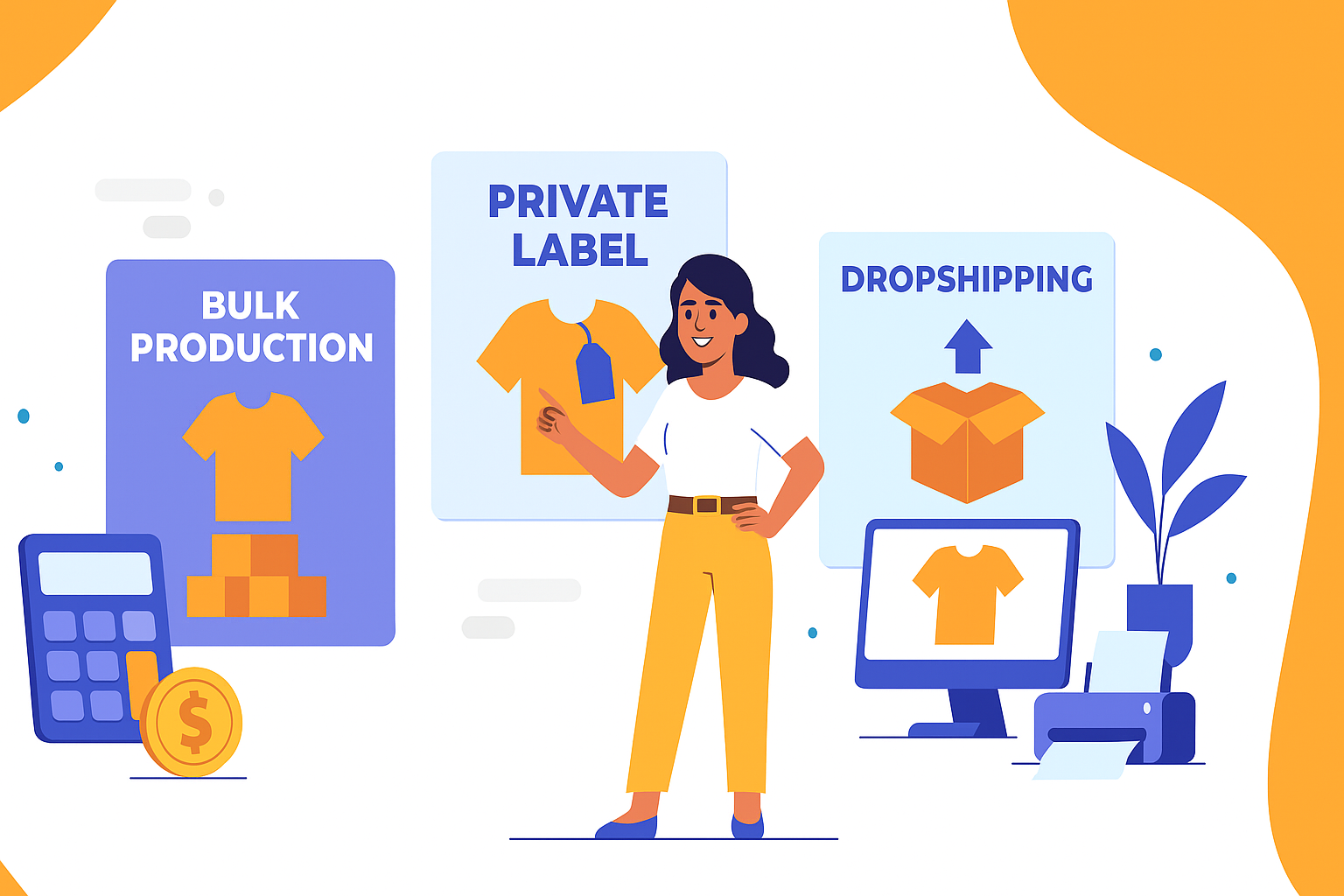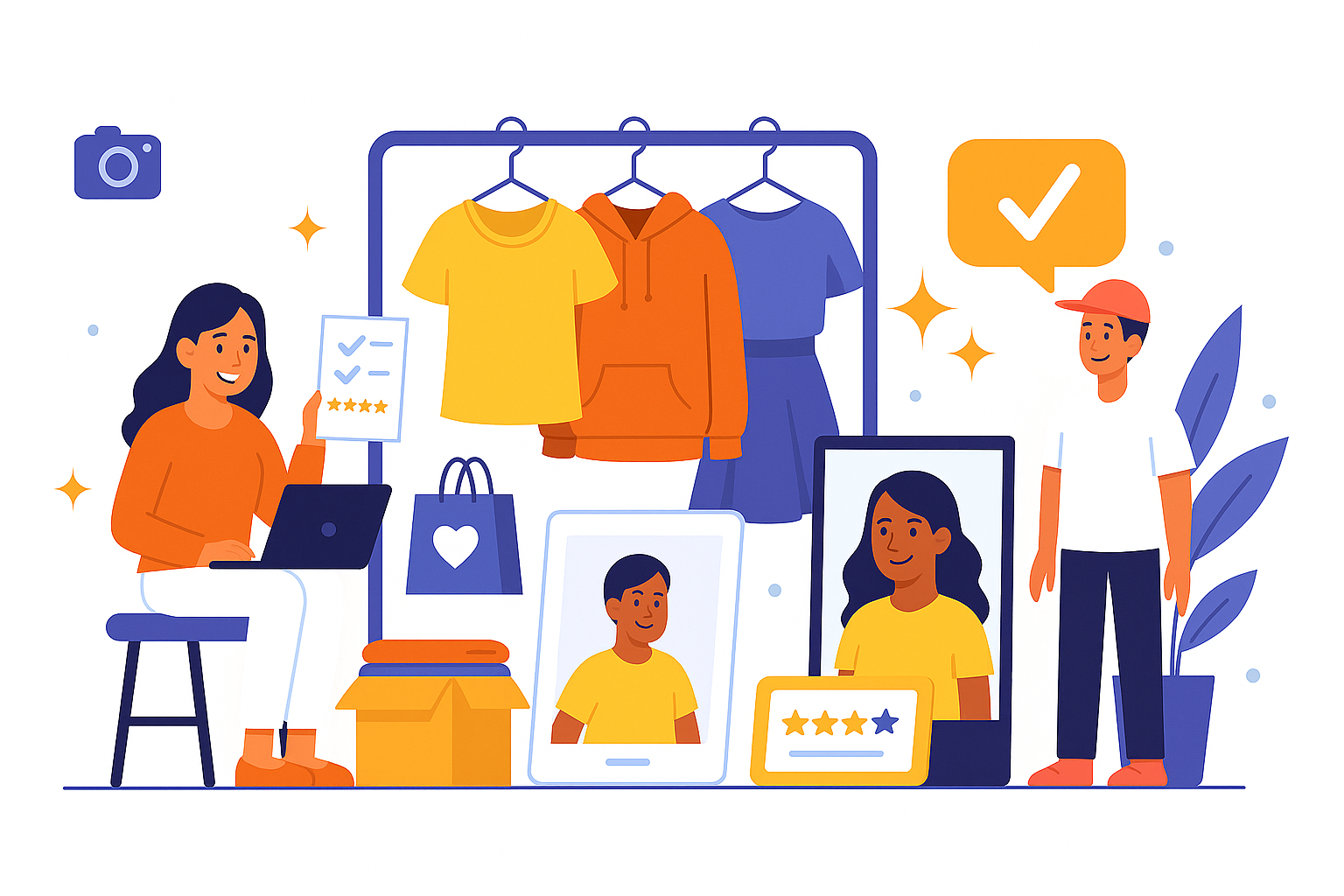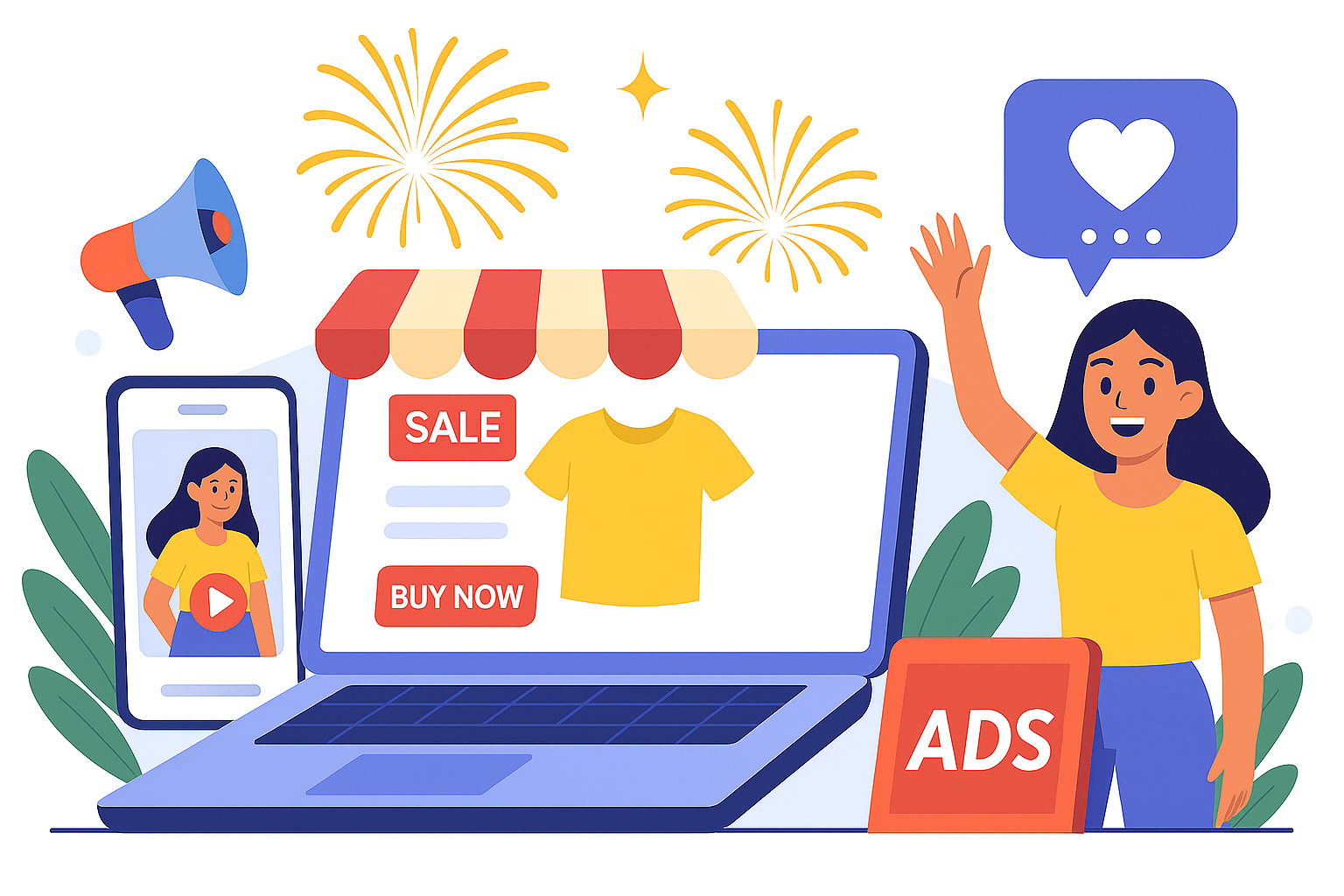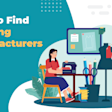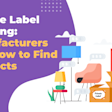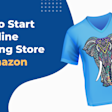
From Idea to Launch: How to Start a Clothing Business That Sells
Do you dream of seeing your designs worn on the streets or trending online? If you’ve ever wondered how to start a clothing brand from your living room or a small studio, this guide is your first runway. Starting your own fashion line isn’t just about bold ideas and beautiful apparel; it’s about turning vision into strategy.
Whether you're curious about how much it costs to start a clothing business or you're ready to create a full-fledged fashion brand, we’ll walk you through each key step, from building a solid business plan and researching your target market, to defining your brand identity, handling legal and financial basics, crafting a marketing strategy, testing your products, and more. If you’re ready to turn your passion into a new clothing company, let’s begin.
Step 1: Create Your Business Plan
Every successful clothing brand starts with a solid blueprint. Your business plan is more than just a formality - it’s the foundation of your fashion company. Start by defining your brand’s vision and mission: What do you stand for, and what makes your designs different from other clothing brands? Craft a compelling and unique selling proposition (USP) that speaks to your audience and carves out your space in the market. If you're wondering how to start a clothing business that not only looks good but makes money, it starts right here—with clear strategy and intention.
Next, you need to clarify your market positioning. Are you launching a high-end fashion line, an affordable online apparel brand, or something in between? Set clear, measurable goals for the first 6 to 12 months. Develop a budget that accounts for production, marketing, website design, and day-to-day operations, and explore funding options if needed. Finally, don’t forget to outline a basic pricing strategy and brainstorm early marketing ideas to generate buzz and build brand awareness from day one.
Step 2: Research and Define Your Target Market
Before you design your first hoodie or launch that sleek fashion line, you need to know exactly who you’re designing your products for. Start by analyzing customer profiles and buying habits—consider factors like age, lifestyle, budget, and what inspires their fashion choices. To uncover profitable niches and unmet needs, explore tools like the AMZScout Product Database, which helps users generate clothing business ideas based on market demand. You can also draw inspiration from platforms like Pinterest, Instagram, Etsy, and fashion trend reports.
Once you have got a few product concepts in mind, you can validate their potential using the AMZScout PRO AI Extension by following these steps:
Step 1: Install the AMZScout PRO AI Chrome Extension.
Step 2: Search for a product on Amazon. Type in your idea (e.g., “oversized graphic tee”) and click the extension icon in the top-right corner.
Step 3: Review the product’s performance. This is a key step that’s important to validate if your product idea can succeed in the market:
Review the search results. You'll see a list of products with valuable data like Estimated Sales, Revenue, Price, and Reviews displayed next to each item. Use this information to help you identify top-performing products. You can also sort the results by criteria that matter most to you (for example, by Estimated Sales to highlight the bestsellers).
Evaluate sales trends. Click on the Product History button located below any product to open a graph showing its pricing and sales volume over time. Look for consistent performance: Are the product’s sales steadily increasing, staying stable, or declining? This will help you understand if there’s a growth trend or if it’s a product that’s past its peak.
Assess product viability using AI insights. Click the AI Product Analysis button under any product to get a quick summary of its strengths and weaknesses. This AI-generated report will highlight potential risks (like high competition or seasonal demand) and opportunities (such as growing demand or under-served markets). Make sure the opportunity aligns with your goals and that any risks are manageable.
This step ensures that you’re not just starting a clothing brand, but that you’re also building one that sells.
Next, it’s time to dive into competitor analysis. You can use the AMZScout AI Review Analyzer to extract insights from real customer reviews:
Step 1: Visit the AI Review Analyzer page and enter your email address to start a free trial.
Step 2: Click “Analyze Product by ASIN” paste the ASIN of a competitor’s top product, and click “Get Review Analysis.”
Step 3: Review the data—you’ll find graphs, key phrases, and trends in customer feedback that reveal exactly what shoppers love (and hate).
The more clearly you understand your audience and their pain points, the stronger your fashion brand's foundation will be.
Step 3: Choose Your Business Model
Now that you’ve defined your audience, it’s time to decide how your fashion brand will operate. There are several business models to choose from, each with its own pros and cons.
Bulk manufacturing offers the highest profit margins and full creative control, but this option also requires a larger upfront investment and inventory storage.
Private label lets you customize existing products with your own branding, which is ideal if you want to start your own clothing line without creating the design from scratch.
Dropshipping is a low-risk option with minimal overhead that’s perfect for testing new ideas or running your clothing business online from home. Just keep in mind that the margins here are slimmer and quality control can be tricky.
Consider your budget, timeline, and how hands-on you want to be. If you’re launching a small apparel brand with limited startup capital, dropshipping or print-on-demand might be smart starting points. If your goal is to build a premium fashion line with long-term brand equity, investing in private label or full production might be worth it. Choose a model that aligns with the goals and funding plan you laid out in your business strategy, as your entire company structure will follow from this decision.
Step 4: Develop Your Brand Identity
Your brand identity is what sets your clothing business apart in a crowded fashion market. It’s the personality behind every product. Start by crafting a memorable brand name that reflects your mission, aesthetic, and audience appeal. You also need to make sure the domain name is available so your brand is easy to find online. Next, design a professional logo and create a clear mission statement that speaks to your values and vision. Choose a visual style (including colors, fonts, and imagery) that reflects the mood and tone of your clothing line, whether it’s sleek and modern or cozy and playful.
Consistency is key: apply your branding across every customer touchpoint, from your website and social media to packaging and hang tags. Whether someone finds your fashion brand through Instagram or unboxes their first order, the experience should feel cohesive and on-brand. Strong branding builds trust, recognition, and loyalty, which are the essential ingredients when starting your own fashion line.
Step 5: Manage Legal Aspects and Financials
Behind every great fashion brand is a well-organized business foundation. Start by registering your clothing company with the appropriate local or national authorities and securing any licenses or permits needed to operate legally. Next, protect your brand by trademarking your name and logo, as this safeguards your identity as you grow. Handling the financial side is just as crucial: set up a dedicated business bank account, choose accounting software, and become familiar with basic tax requirements.
Whether you're running your clothing business from home or scaling into retail, accurate financial tracking helps you stay profitable and compliant. Consider consulting with an accountant or business advisor early on to avoid costly mistakes. A strong legal and financial setup gives you peace of mind and frees you up to focus on designing and growing your apparel brand.
Step 6: Source Materials and Manufacturers
The quality of your clothing line depends on who you partner with, so sourcing the right materials and manufacturers is a make-or-break step. Start by researching and vetting suppliers that align with your brand’s quality standards, price point, and production scale. Whether you’re creating a high-end fashion brand or launching a small apparel business from home, choose partners that can deliver consistency and reliability.
Always order samples before committing to any bulk orders, as this allows you to test the fabric’s feel, construction, fit, and overall finish. If the samples don’t meet your expectations, keep looking until they do. Once you find the right supplier, you’ll need to plan your inventory management strategy: How much stock can you realistically store, and how will you handle reorders? Clear communication and good planning here ensure that your clothing business runs smoothly as demand grows.
Step 7: Price Your Products
Pricing your products isn’t just about picking a number. Your goal is building a sustainable, profitable clothing brand. Start by calculating all your costs, including production, packaging, shipping, marketing, and platform fees. Once you determine your total cost per item, research your competitors and determine a markup that positions your fashion line competitively while still delivering profit.
If you’re launching a premium apparel brand, your pricing should reflect that with higher margins and elevated presentation. If you’re targeting a budget-conscious market, volume sales might be your focus. In the early stages, keep your pricing flexible and use sales data and customer feedback to adjust your strategy as needed. Smart pricing helps your clothing business grow while keeping your brand accessible and aligned with your target audience.
Step 8: Set Up Your Sales Channels and Fulfillment
Now it’s time to bring your clothing brand to life and get your products in front of customers. Start by building your online store on platforms like Shopify, WooCommerce, Etsy, or Amazon—choose one that fits your budget, tech comfort level, and audience reach. Each product listing should include high-quality photos, clear sizing info, detailed descriptions, and SEO-crafted keywords to help shoppers find your fashion brand online.
Next, decide how you’ll manage fulfillment: you can handle orders in-house, use third-party logistics (3PL) for faster shipping and scalability, or adopt a hybrid model. Think about how much time and space you have, and what kind of customer experience you want to offer. As your clothing business grows, don’t overlook offline sales opportunities like pop-up shops, local markets, or wholesale partnerships with boutiques. Diversifying your sales channels helps to expand your brand’s visibility and keeps the orders flowing.
Step 9: Plan Your Marketing Strategy
Even the most effectively-designed clothing line needs the right marketing to get noticed. Start by defining your marketing goals, whether it’s building brand awareness, growing your social media following, or driving sales from day one. Choose the right mix of channels based on where your audience spends their time: Instagram and TikTok for visuals and trends, influencer partnerships for trust and reach, email marketing for direct engagement, and paid ads to scale quickly.
Create content and campaigns that align with your launch timeline, from teaser posts and behind-the-scenes footage to giveaways and first-drop promotions. If you're testing products, tailor your messaging to gather feedback and build buzz. Set clear, measurable KPIs, such as email sign-ups, cost-per-click, or conversion rates, and create a budget that supports both organic and paid efforts. With the right marketing plan, your clothing brand can stand out in a fast-moving fashion market.
Step 10: Test Your Product with a Limited Collection
Before going all-in, start by launching a small test batch of your clothing line to validate your designs, sizing, quality, and overall appeal. Treat this as a soft launch, giving you an opportunity to refine your product and brand based on real-world feedback. Invest in high-quality product photography, including model shots if possible, to showcase your apparel in the best light across your website, social media, and ads.
Then, aim to track every sale and pay close attention to customer reviews, returns, and engagement. What pieces are selling fastest? Are there any consistent comments about fit, fabric, or style? Use this feedback to adjust your designs, pricing, and inventory strategy before scaling production. Testing gives you valuable insight and the confidence to grow your clothing business with intention and precision.
Step 11: Launch Your Brand Officially
Now it’s time to take your clothing brand from concept to reality. With your designs polished, your store ready, and your strategy in place, launch your finalized product line across all sales channels, whether it’s your Shopify site, Amazon storefront, Etsy shop, or a mix of platforms. Create buzz with a full-scale marketing campaign that includes social media reveals, influencer collaborations, email blasts, and paid ads designed to drive traffic and conversions.
Make the launch experience seamless for your customers: double-check that your website works flawlessly, your product listings are optimized, and your fulfillment process is ready to go. Every click, scroll, and unboxing moment counts. This is your brand’s big debut, so make it memorable. A strong, well-executed launch not only drives early sales but sets the tone for the future of your fashion business.
Final Thoughts
Starting your own clothing brand is a bold and exciting journey, one that blends creativity with strategy, and vision with execution. From crafting a solid business plan and defining your brand identity, to sourcing materials, pricing your products, and launching with confidence, every step plays a vital role in building a fashion line that lasts.
Whether you’re running your clothing business from home or dreaming of becoming the next breakout fashion brand, tools like AMZScout can make the process smoother and smarter. From generating product ideas to analyzing real sales data and uncovering customer insights, AMZScout’s suite of tools gives you the edge needed to make data-driven decisions at every stage. With the right plan, resources, and persistence, your clothing company can go from an idea to full-scale success, one stitch at a time.


